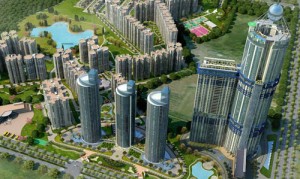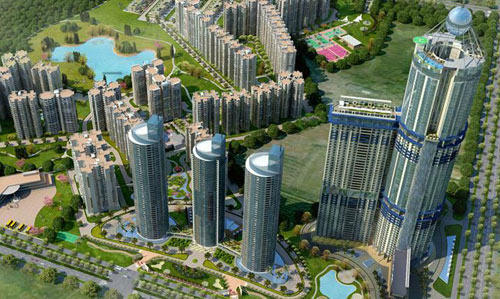By: Ravi Sinha
Track2Realty Exclusive
 Land is scarce and the only way in urbanisation is to go up where more FSI/FAR would mean increasing the supply and bringing the price down, goes an old philosophy of the Indian developers. In reality, nearly all the high rises across the Indian cities are high-end luxury projects and seem to fulfil the aspirational needs of the Richie Rich. With this background will the government’s decision to allow soaring skyline of Indian cities curb realty prices?
Land is scarce and the only way in urbanisation is to go up where more FSI/FAR would mean increasing the supply and bringing the price down, goes an old philosophy of the Indian developers. In reality, nearly all the high rises across the Indian cities are high-end luxury projects and seem to fulfil the aspirational needs of the Richie Rich. With this background will the government’s decision to allow soaring skyline of Indian cities curb realty prices?
In the wake of reports that the government considers permitting vertical growth with the aim of checking runaway realty prices and generating resources to upgrade urban infrastructure for future growth, the debate has yet again surfaced.
A Planning Commission steering committee, in its draft report, has recommended providing additional FSI (floor space index; the ratio between built-up area and plot size) as development rights, but said it should not come free of cost.
The panel said the charges for additional FSI and land-use conversions should be at least 50% of the circle rate in the area and should be determined professionally. It added that additional FSI should be permitted selectively.
The commission’s steering group on urbanization said the revenue from grant of additional FSI should be “suitably ring-fenced for funding infrastructure projects to sustain higher FSI”.
Urban Development Ministry officials maintain that the proposals, if accepted, would substantially increase availability of housing stock and moderate realty prices.
Calling the present density regulations in Indian cities “archaic”, the report noted that Indian cities had the lowest FSI in the world. “This (densification) should be part of a balanced strategy for expanding the effective supply of prime land and, in the process, raising funds to finance urban infrastructure improvements,” the committee noted.
The Centre should introduce incentives that encourage states and cities to pursue densification strategies for future urban development, it said.
Many cities were already levying such charges for additional FSI in some form or the other, it noted. Hyderabad, for instance, has a ‘city level impact fee for high rise buildings’ and Ahmedabad has systematically been selling a limited amount of additional FSI.
The committee said higher FSI should go hand in hand with provisions such as amalgamation of plots to make housing more affordable.
Rather than the current practice of having a blanket FSI across a city, the panel wanted mixed land use promoted through the concept of granular FSI. “Densification with mixed land use as a planning strategy needs to be followed by the authorities to accommodate future urbanization needs,” said a ministry official.
However, the report has yet again brought to focus the debate as to whether the higher skylines will result into curbing realty prices. The fact of the matter is that what appears to be a natural outcome of more supply-less price has rather escalated the prices in the Indian context. Some developers in the NCR region have launched a number of sky rises within the same micro markets and in the luxury segment, thus killing the very concept of exclusivity as well. No wonder, high rises are yet to become success stories in the many of the cities across India.
Moreover, a skyscraper as a premium segment product works as a magnet across the globe only when it is close to the CBDs and serves the purpose of walk-to-work. In the Indian context three skyscrapers by the same developer in the Noida, far away to the CBD in Nehru Place and Connaught Place tales a different story.
It is true that the move to increase FSI is long overdue. However, space in a city is not a function of geography alone or not limited by the land area. It is the function of technology, legislation, mindset, planning and to a lesser extent funds. City is a place where large number of people live in little space. So it must be dense. So, vertical growth is the right way to densify the city. China has apparently practiced this. Dense need not be congested is a point many cannot grasp.
The present mindset leads to horizontal growth which further degenerates into urban sprawl and that is the bane of present Indian cities. However, in sanctioning the increased FSI, government should not loose sight of the fact that the burden on the city infrastructure is going to be on the corporation/municipality. The increase in FSI is going to be by an act of the corporation/municipality. However, more FSI only means more for the developers and the benefits hardly reach to the end-users in India.





